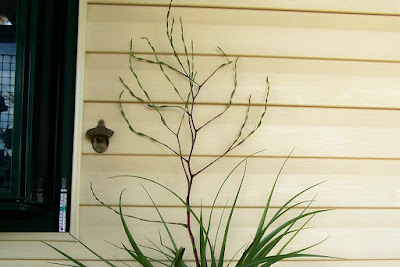Tillandsia utriculata native to Florida and Georgia in the United States, the Caribbean, southern and eastern Mexico (Tamaulipas, Veracruz, Oaxaca, the Yucatán Peninsula), Central America, and Venezuela. It is found in dry and mesic hammocks, cypress swamps, pinelands at elevations of near sea level to 1200 meters.
Tillandsia utriculata, also called as The spreading air plant, The giant air plant, Platystachys utriculata, Vriesea utriculata, Tillandsia pringlei, Tillandsia lingulata, Tillandsia bartramii, Tillandsia nuttalliana, Platystachys ehrenbergii, Allardtia potockii, Tillandsia ramosa, Platystachys ehrenbergiana, Tillandsia ehrenbergiana, Tillandsia brevibracteata, Tillandsia sintenisii, Tillandsia ehrenbergii, is a species of the genus Tillandsia. This species was described by Carl Linnaeus in 1753.
IDENTIFY TILLANDSIA UTRICULATA AIR PLANT
Tillandsia utriculata native to Florida and Georgia in the United States, the Caribbean, southern and eastern Mexico (Tamaulipas, Veracruz, Oaxaca, the Yucatán Peninsula), Central America, and Venezuela. It is found in dry and mesic hammocks, cypress swamps, pinelands at elevations of near sea level to 1200 meters.
It is a large sized epiphyte (may grow terrestrially), which reaching 0.5-2 meters, stemless with many light green to gray-green leaves in a dense utriculate rosette, 40-100 cm long, densely and finely pale-appressed-lepidote throughout.
This air plant blooms in spring to fall (especially summer) from the very large, robust, loose, glabrous, simple or branched inflorescence with many bunches with a small, wavy axis, each bearing about 15 flowers (bipinnate, even tripenate inflorescence). The floral bracts are erect; enfolding the base of the flower but very little of the rhachis, ovate, obtuse or acutish, much exceeded by the sepals, equaling or shorter than the internodes, closely and prominently nerved throughout, subcoriaceous and green with a broad, membranaceous, often dark purple margin, ecarinate. The flowers are erect, appressed to the rhachis; pedicels stout, to 5 mm long. Sepals narrowly elliptic or obovate, obtuse, 14-18 mm long, subcoriaceous with a membranaceous margin, prominently nerved. Petals tubular-erect, linear, acute, 3-4 cm long, white; Stamens and pistil exserted.
TILLANDSIA UTRICULATA AIR PLANT CARE AND CULTURE
Cultural information should only be used as a guide, and should be to be adapted to suit you. Your physical location; where you grow your plants, how much time you have to devote to their care, and many other factors, will need to be taken into account. Only then can you decide on the cultural methods that best suit you and your plants.
Light:
Tillandsia utriculata can grow in the shade or in a sunny situation (partial shade even large specimens withstand full sun). Avoid all the sun in the afternoon in summer if the plant is young or has not been used.
Temperature:
The required temperature ranging from 10 to 32°C. Get it early enough in the fall if you grow it outside, so that it does not face night temperatures below 4 or 5 ° C, especially if it is wet. The plants can faced temperatures close to 0 ° C (sheltered and dry) for a few hours without damage.
Humidity:
This species need the moderate level of humidity. Good aeration is required, the plant must dry quickly (in less than an hour).
Substrate, growing media and repotting:
The pot culture gives very good results. Place the plant very close to a window indoors in winter and preferably out in mid-shade in the summer. Tillandsia utriculata also refer to be mounted on a solid substrate that does not retain water. You can glue the plant directly to the surface with a strong adhesive, or you can wire the plant to the base. Don't cover the base of the plant with moss or it may rot. It can be grown on almost any imaginable decorative mount, including shells, rocks, slate, driftwood, etc. Group them in decorative clumps for maximum effect.
Watering:
Almost every day in summer, 2-3 times a week in winter according to the luminosity and the ambient humidity. Obviously when it rains and if you grow it outside, it counts as a watering. It is advisable to leave water in the rosette (except at the beginning of flowering, so as not to drown the inflorescence when it does not emerge from the rosette), by changing it regularly (every 3 days).
Fertilizer:
This air plant quite greedy in fertilizer, do not forget to give it from time to time (once a month in winter and 3 times a month in summer).

















COMMENTS